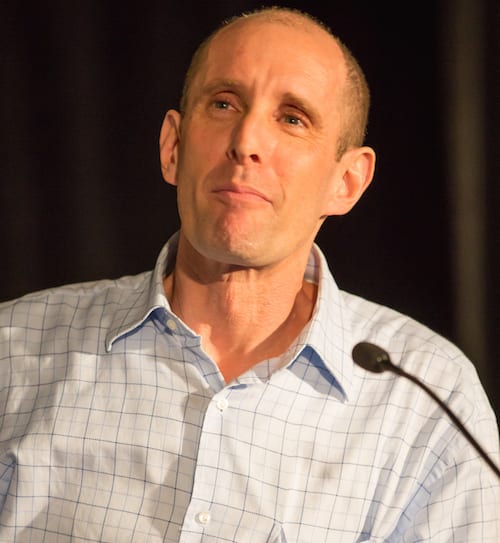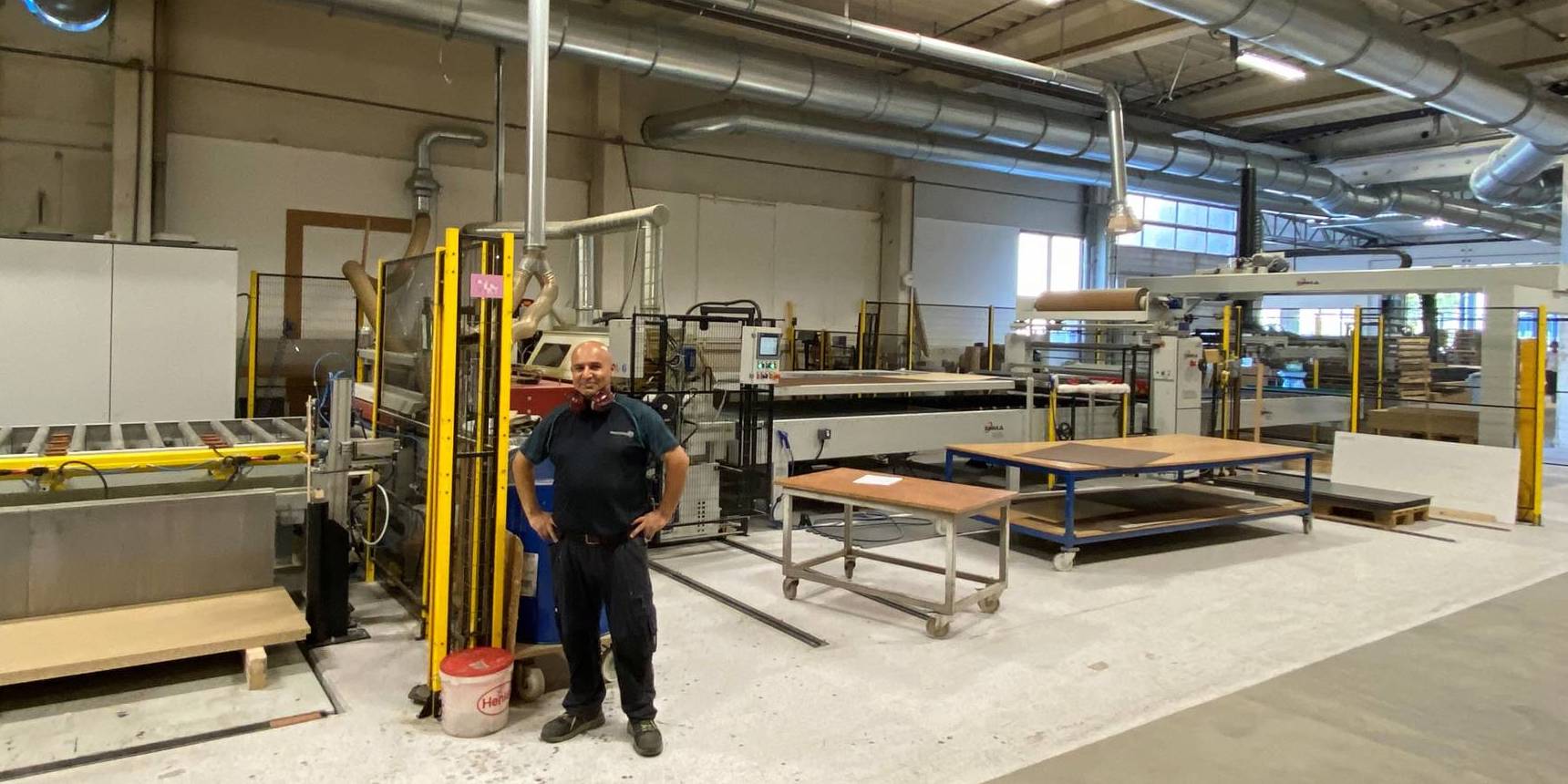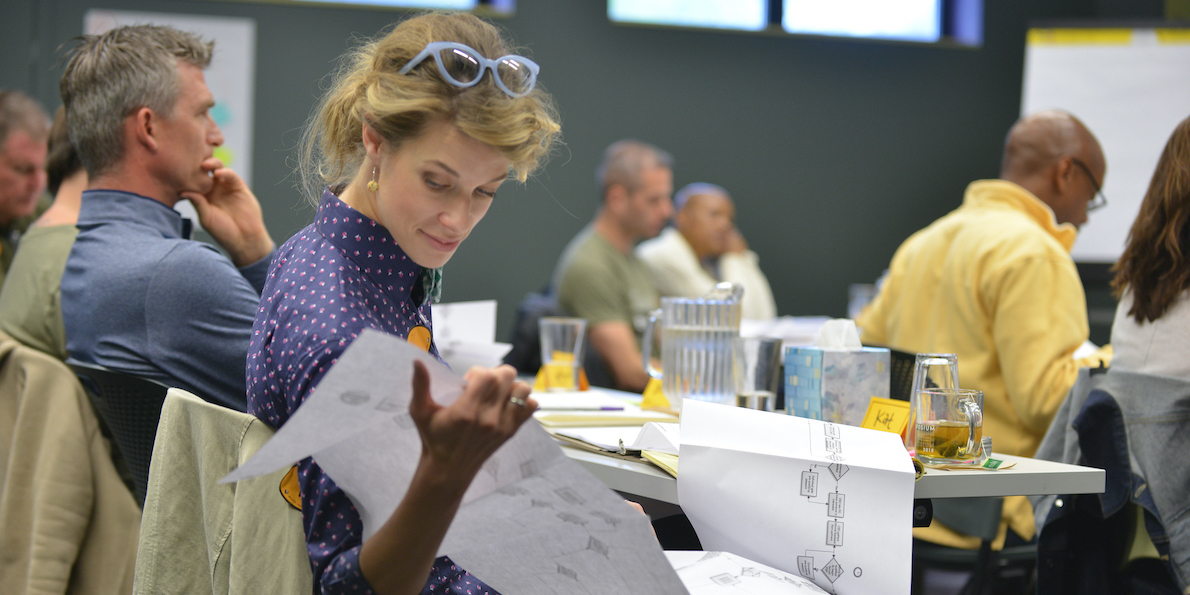
Use lean management to make your organization fit
FEATURE – Just like a diet alone won't result in real fitness, cost cutting is in itself not enough to ensure an organization is healthy. Making our companies fit and sustaining results begin with building capabilities in our people and improving our processes.
Words: Daniel Markovitz, consultant, speaker and author
Lean lends itself to a number of effective parallels, but the one I like the most is perhaps the one with personal physical fitness (it will no doubt resonate with you, too, if you are a runner like me).
Real fitness isn't defined by overall weight, or by body fat percentage. Sure, if you're 165 cm tall and weigh as much as an A-Class car, you should probably put down the box of Twinkies. But if you're a 178 cm fashion runway model tipping the scales at 46 kilograms soaking wet, you're probably not very fit either. Skinny, yes, but not especially fit. Real fitness isn't just about body mass index. It includes cardiovascular capacity, muscular strength, and flexibility. And if you're an athlete – even a recreational one – you also need coordination, agility, speed, and quickness. You can't gain those capabilities just by dieting.
There's an organizational parallel here: a company can't get fit simply by cutting costs. To be sure, it can improve its income statement in the short term by laying off workers, closing offices, banning color copies, and getting rid of the coffee machine. That's not going to make the organization fit, however, because organizational fitness isn't just about low expenses. It includes the ability to react quickly to market shifts, to create and deliver new products and services, and to continually improve process efficiency and effectiveness – all in the service of delivering greater value to customers. Cutting expenses as a way to organizational fitness is like cutting calories as a way to personal fitness. At its logical extreme, it results in corporate anorexia – a feeble organization filled with dispirited employees unable to compete in the marketplace and serve customers.
The vast majority of people who lose weight on a diet regain it within a year or so. That may be partly due to a lack of discipline or a failure of willpower. But there's more to it than that. When obese people embark on a weight loss program, the body actually fights to regain the weight it has lost. It acts as though it's in danger of starvation (even if the person is still overweight), and pulls out all the metabolic stops to encourage more food consumption. It produces more ghrelin, a gastric hormone that stimulates hunger, and generates less peptide YY and leptin, hormones that suppress hunger.
Organizations that simply cut expenses tend not to maintain their new weight either – they also fight to regain the weight that's been shed. More often than not, there's no concomitant reduction in work – it simply gets shifted around after layoffs. Employees take on the additional responsibilities of a colleague or a boss. They work longer and harder, but because the underlying processes aren't functioning any better, and because these companies haven't focused on improving how they operate, work doesn't get done faster, better, or more easily. Eventually, after the financial crisis passes, the organization brings back the coffee machine, permits color copies, and caters meetings again. Travel restrictions are lifted. Gradually, the company hires people to refill the roles that were eliminated earlier. The weight comes back on, and the organization is just a market downturn away from another round of layoffs and cost cutting.
The truth is that most companies treat expense reduction as a one-time exercise. When the pressure is off, expenses come back, because the company hasn't invested in building internal capabilities and improving processes. Some research from McKinsey shows that only 10 percent of cost reduction programs show sustained results three years later. Like a person who concentrates on weight loss through fad diets, the fat comes back. Always.
The alternative is for organizations to focus on building fitness, not on reducing costs. In this context, fitness means becoming faster, more agile, and better able to take advantages of new opportunities and serve customers better. A corporate "fitness program" means examining the processes by which the organization operates and developing employees' capacity to solve problems and improve performance. This idea is well understood in the lean community.
But fitness also means finding new ways to create value for customers that extends beyond internal processes. Here are a few examples:
Wild Things Gear
Wild Things Gear makes technical apparel that consumers can customize to their own needs. CEO Ed Schmults believes that customization is especially important for technical clothing, because it allows customers to create the functionality that's important to them, whether that's for ice climbing, skiing, or just tramping through the woods with the dog. Have you ever noticed that the chest pocket on most fleece and waterproof jackets is on the left side? That's because 85% of people are right-handed. Wild Things Gear allows consumers to put the pocket on either side. Of course, customization is nice for fashion reasons as well. Consumers get to choose their own colors, rather than being forced to choose among colors that a designer selected 18 months earlier. As Schmults says, "Who am I to tell a customer his jacket is ugly?"
Ruffwear
Ruffwear designs and builds gear that allows dogs to join their owners on outdoor excursions. Like most outdoor industry companies, Ruffwear generally builds and sells products in two seasonal batches. The twice-yearly batches of product posed a financial difficulty for the company's European distributor. To keep shipping costs to a minimum, it would buy a full container of new product from Vietnam. Financially, the inventory consumed an enormous amount of the distributor's cash, making it difficult to pay Ruffwear for the goods in a timely fashion. With so much inventory in stock, the distributor also had to discount old products to make room for the new season's products. This meant that Ruffwear's new products had to compete with its old, discounted, products for space on retail shelves.
Ruffwear ended the practice of delivering an entire season's worth of products in one shipment and began airfreighting smaller collections of product as often as twice per week from the US.
The distributor's cash flow improved, because its money wasn't tied up in a huge batch of inventory. It was able to order products more accurately, because it didn't have to forecast many months in advance. Smaller shipments lowered logistics costs at the distributor's third-party warehouse.
As a result, accounts receivable declined by 62%, and closeouts went from 5.8% of total unit sales per year to 1.4%. Taken together, these changes enabled the company to lower retail prices for its products in Europe by 7% – and still increase profits.
Bilder & De Clercq
The Dutch supermarket chain Bilder & De Clercq increased customer value by making the grocery shopping experience easier. We all know how supermarkets are typically organized: produce, dairy, meat, and fish around the perimeter, with non-perishable goods in the central aisles. That layout isn't conducive to easy shopping for, say, a weeknight dinner.
Bilder & De Clercq rearranged stores to help customers get the ingredients they needed for a meal faster. Large photos show the dish, with all the necessary ingredients – including meat, fish, and dairy – on the tables below. There's also a recipe card with cooking directions on the shelf (and, of course, bottles of wine that go well with the meal).
Bespoke Bicycles
When you're selling a bike that costs as much as a car, you have to provide extra value to the customer. Typically, a high-end bike store will do that by doing a custom fit for the bike. But Bespoke Bicycles in London goes further. Of course, it features a gorgeous retail layout – as sexy and clean as the best Niketowns. But it takes the fitting experience to a higher level. Rather than simply measuring static body part lengths (arm, leg, torso, etc.) as most stores do, Bespoke's highly skilled bike fitters use a 3D motion capture system to model how your body actually works when it's moving.
The motion capture not only allows the company to fit the bike perfectly to your body, it allows them to see potential problem areas due to muscle weakness or lack of flexibility. With this knowledge, they can provide (for an additional cost) tailored fitness and training sessions, ensuring that you don’t get hurt… or ever want to go to another retailer.
A fit organization does not focus on cost reduction. Rather, it continually develops the capabilities of its employees and the quality of its processes in order to increase the value it provides its customers. To paraphrase Shigeo Shingo, organizational fitness is about making things easier, faster, better, cheaper. In that order.

DANIEL'S LATEST BOOK, BUILDING THE FIT ORGANIZATION, IS AVAILABLE FOR PURCHASE HERE
THE AUTHOR

Dan Markovitz is a consultant and the author of Building the Fit Organization: Six Core Principles for Making Your Company Stronger, Faster, and More Competitive. A faculty member at the Lean Enterprise Institute and a lecturer at the Fisher College of Business, he holds a Stanford MBA, and received a Shingo Research Award for his first book, A Factory of One.
Read more


CONTENT ROUNDUP - Happy New Year, readers! Before kicking things off for 2017 with new, original content, we wanted to share with you the Top 10 of the most-read Planet Lean articles from last year.


CASE STUDY – The story of Norwegian furniture manufacturer Haugstad Møbel that, thanks to Lean Thinking, was able to transform its culture and unlock the potential of sustainable growth.


FEATURE - We often hear that lean is a fundamentally different approach, but what does this really mean? The authors reflect on how lean challenges and debunks our assumptions on how to run a firm, which might also explain why it meets such resistance.


FEATURE – To lean out a training organization means to both transform its internal processes and integrate Lean Thinking in its educational offering: the story of ZingTrain.

